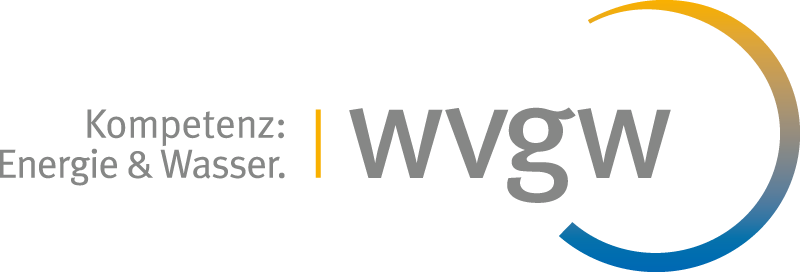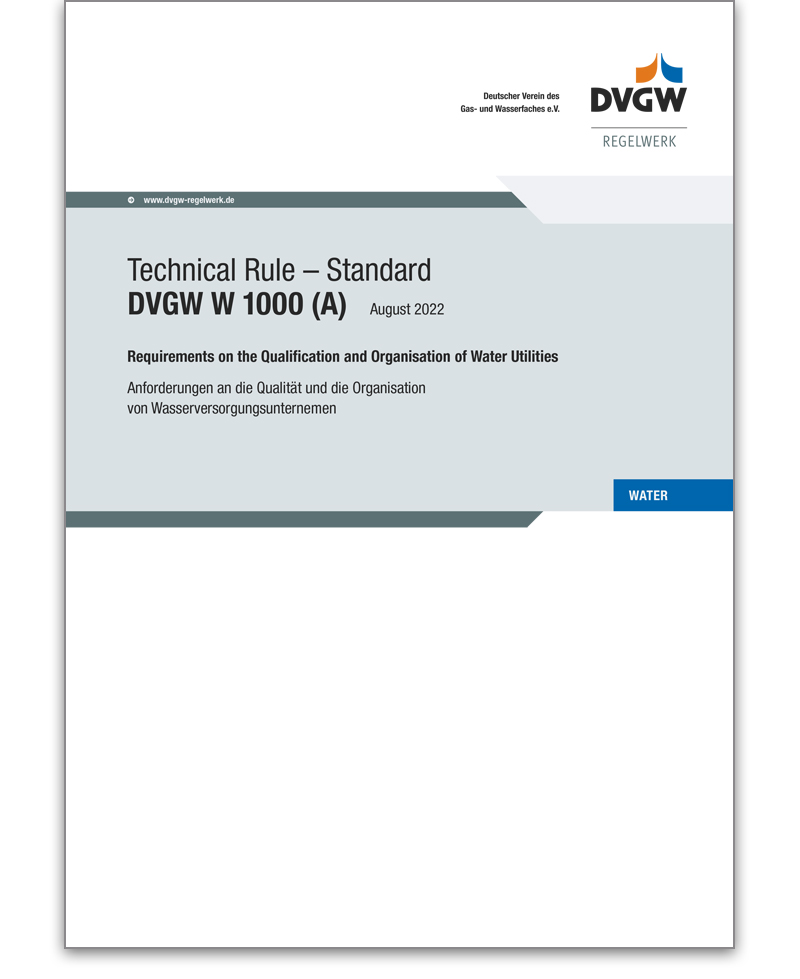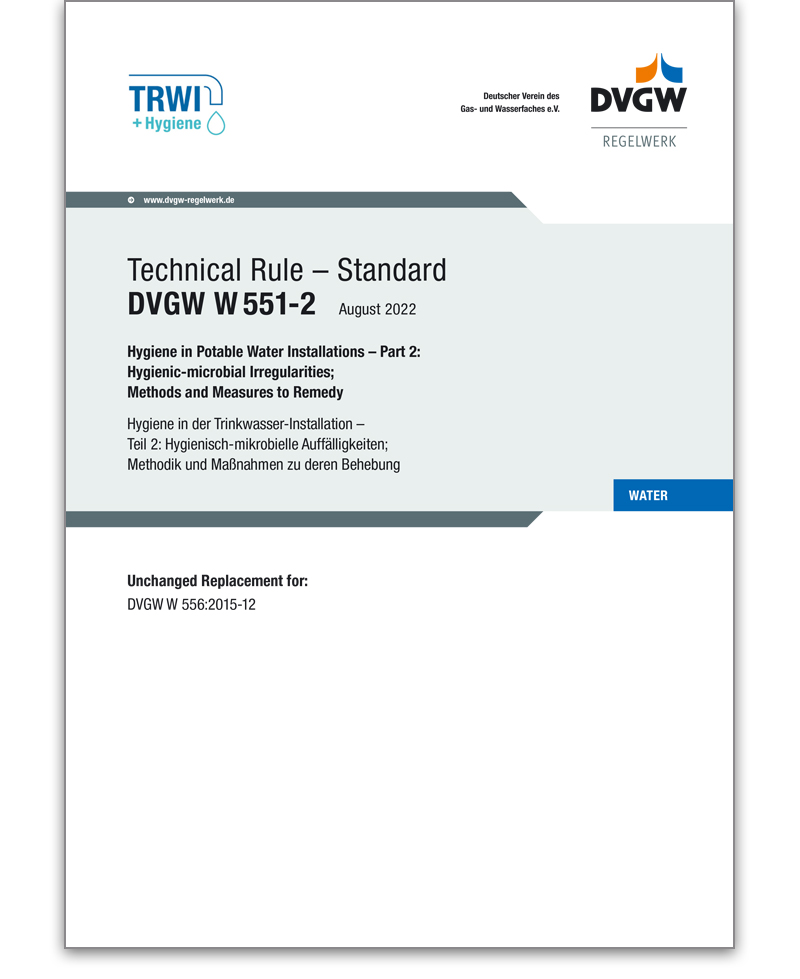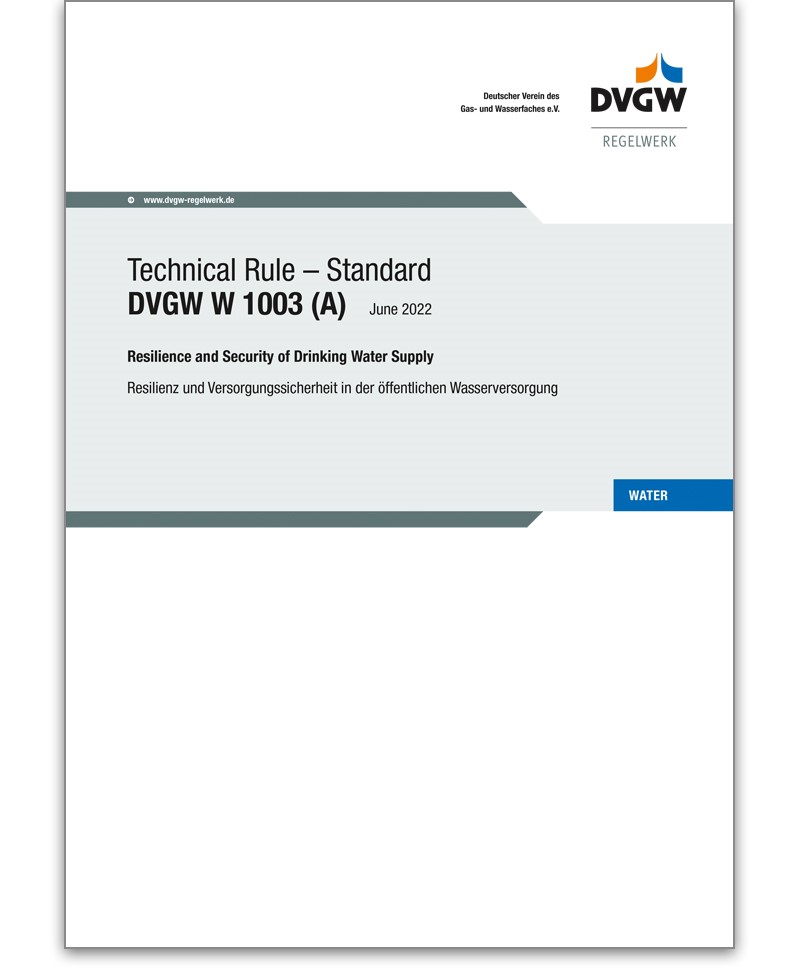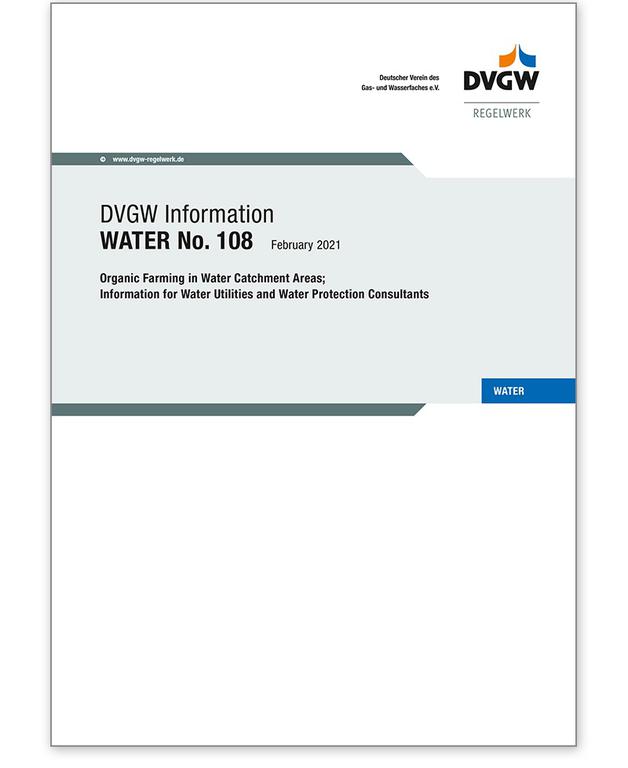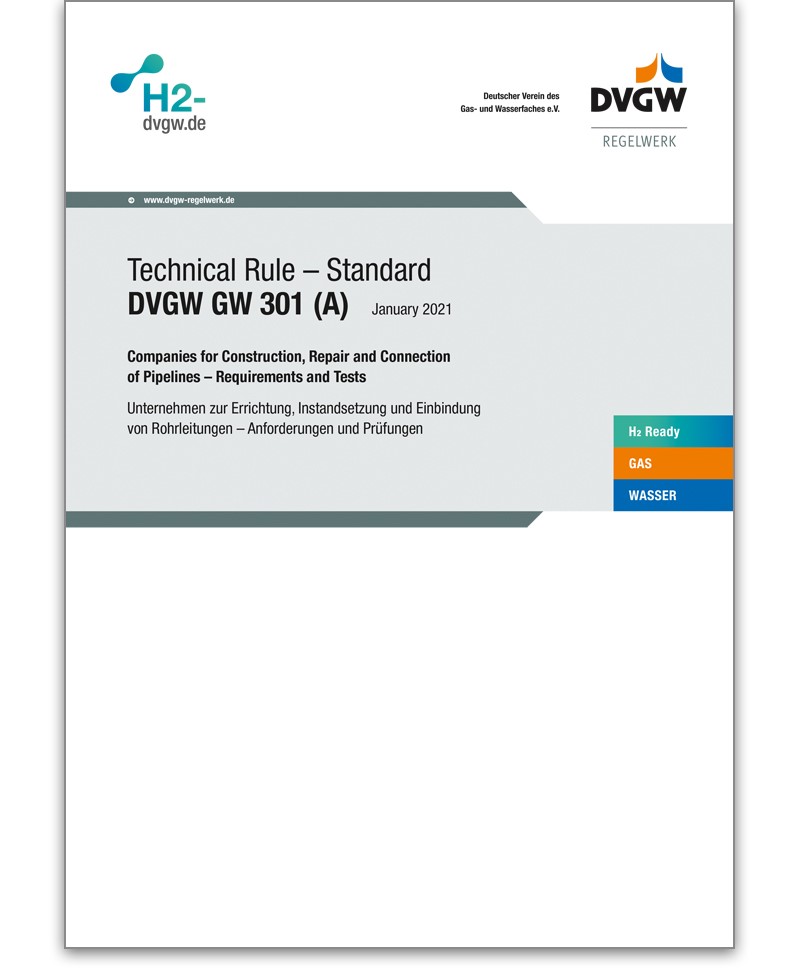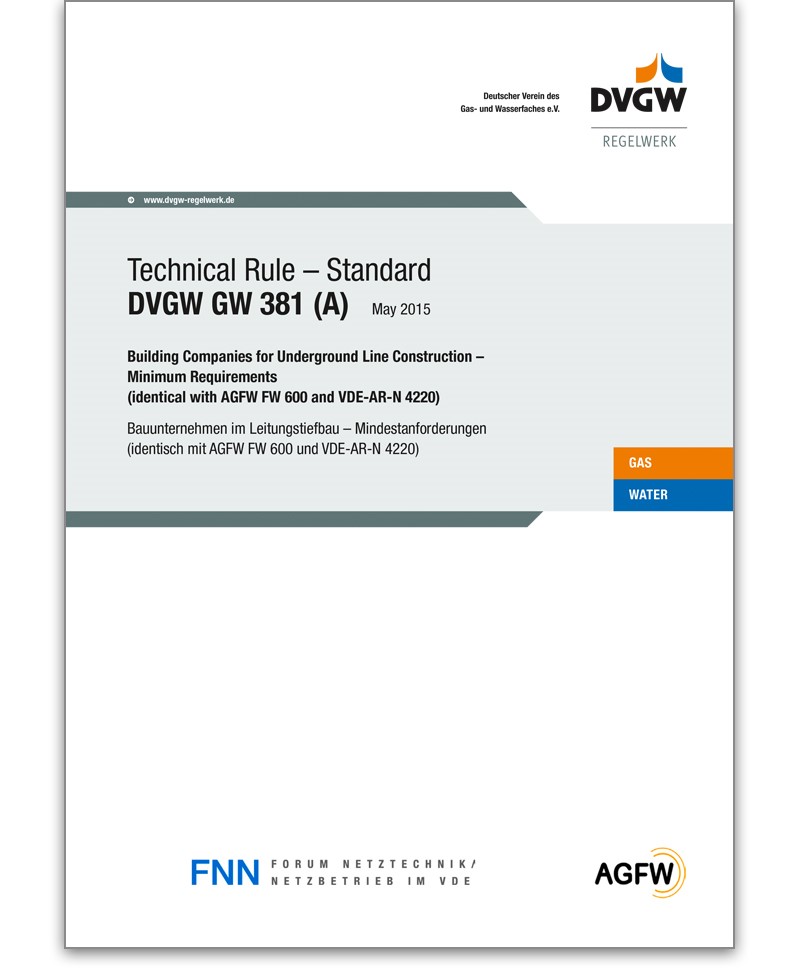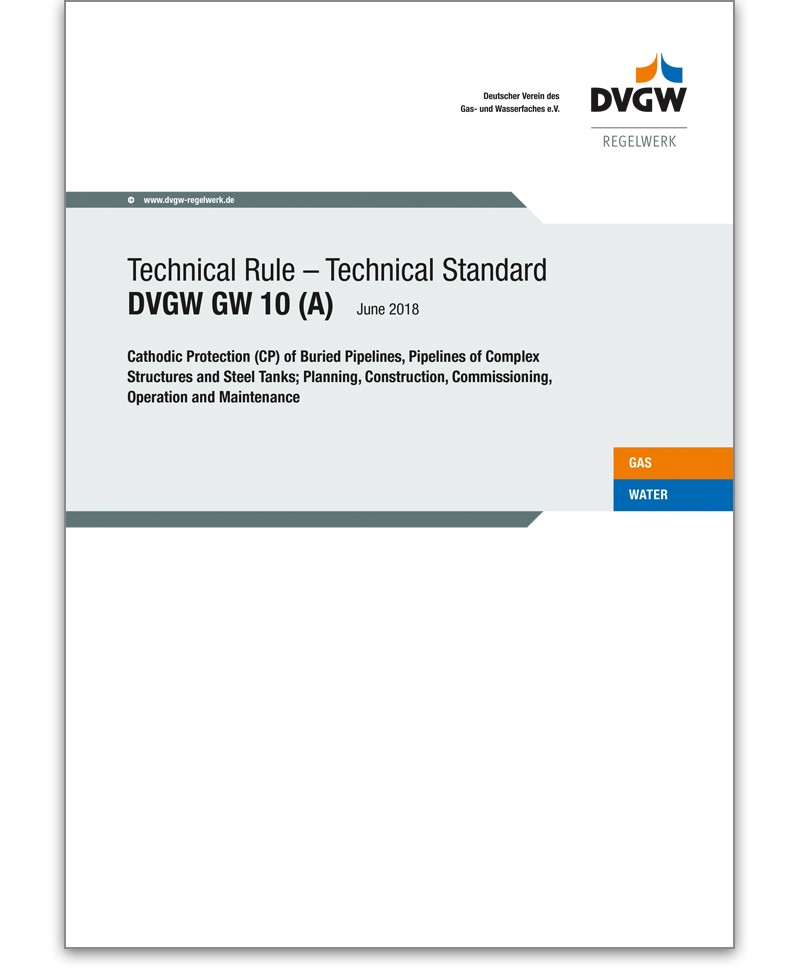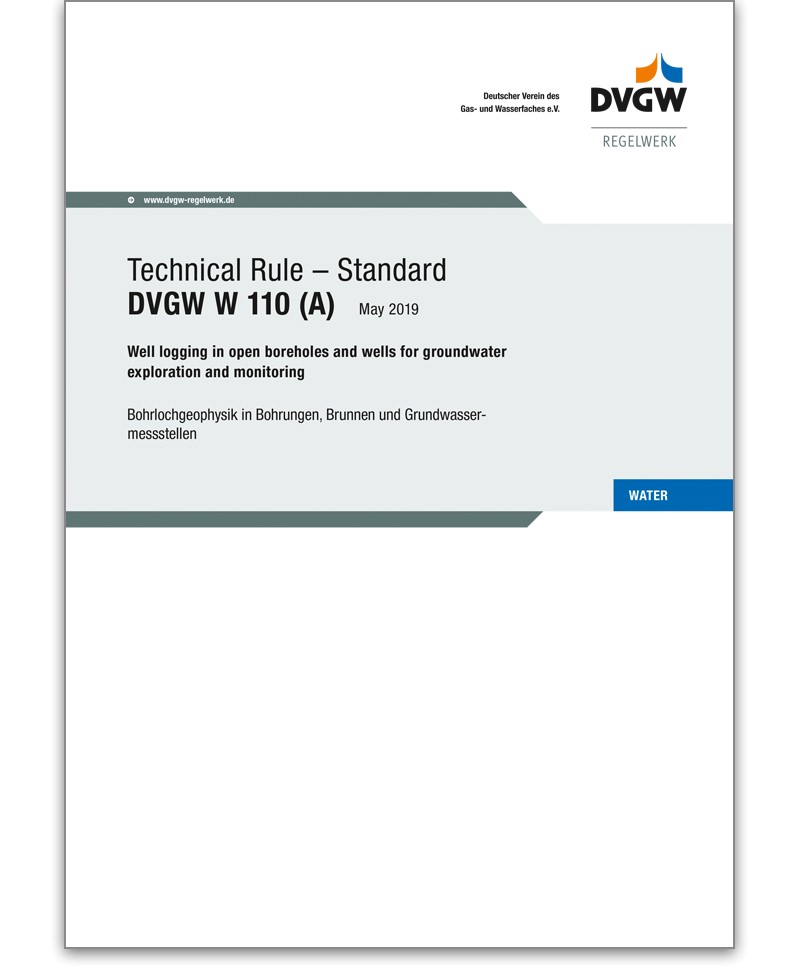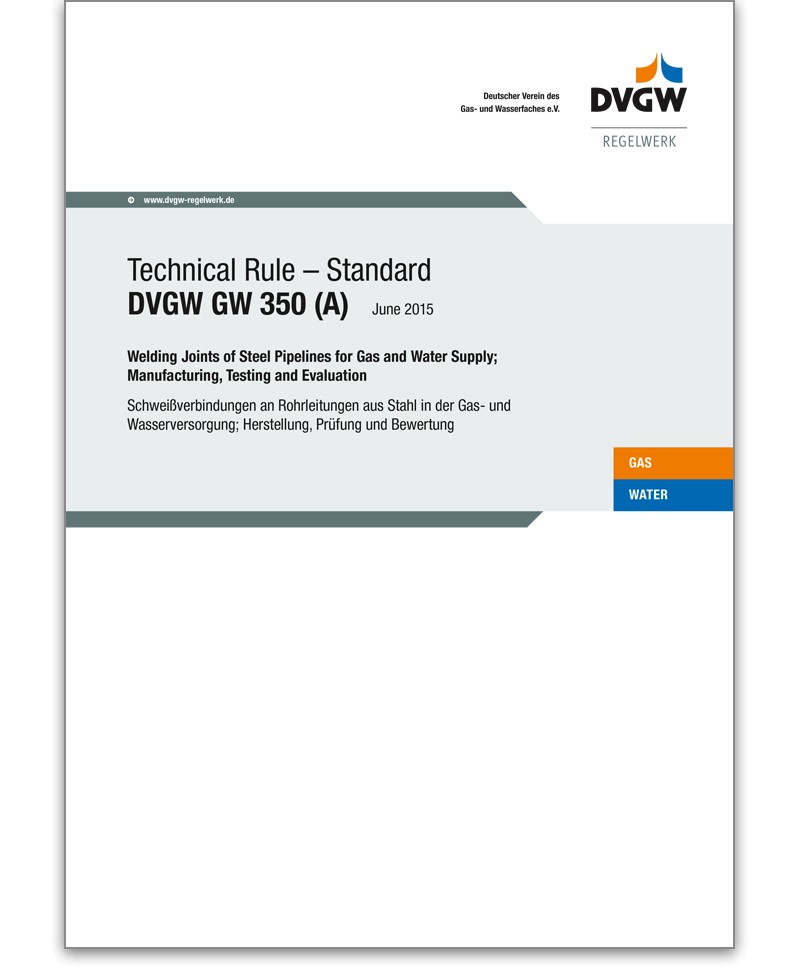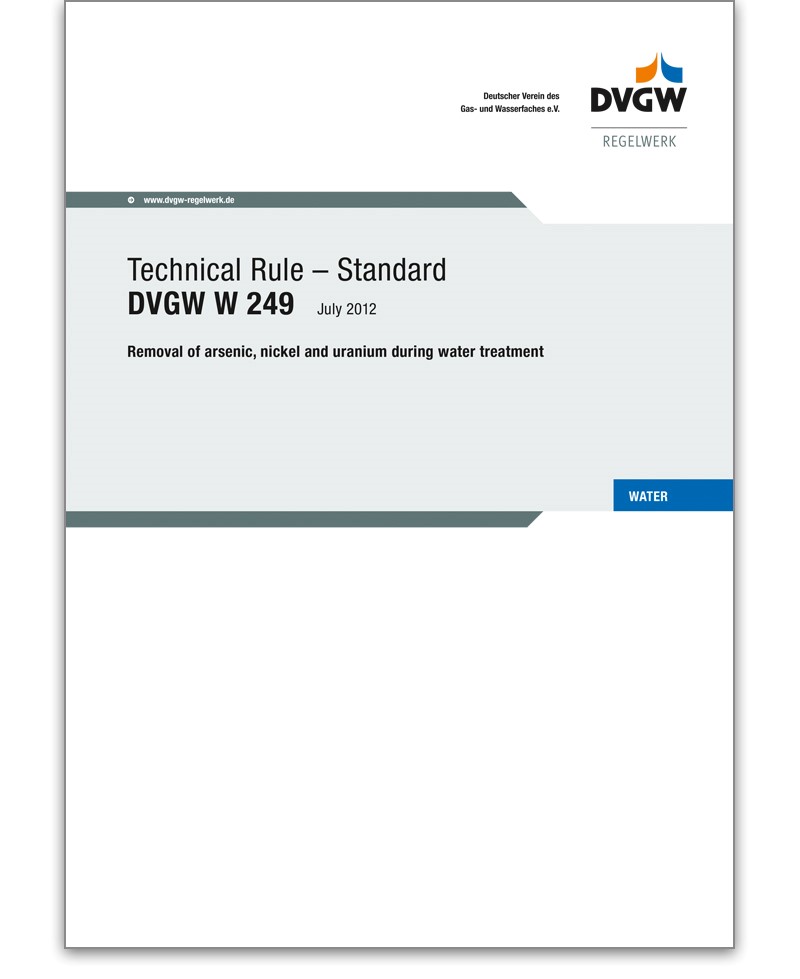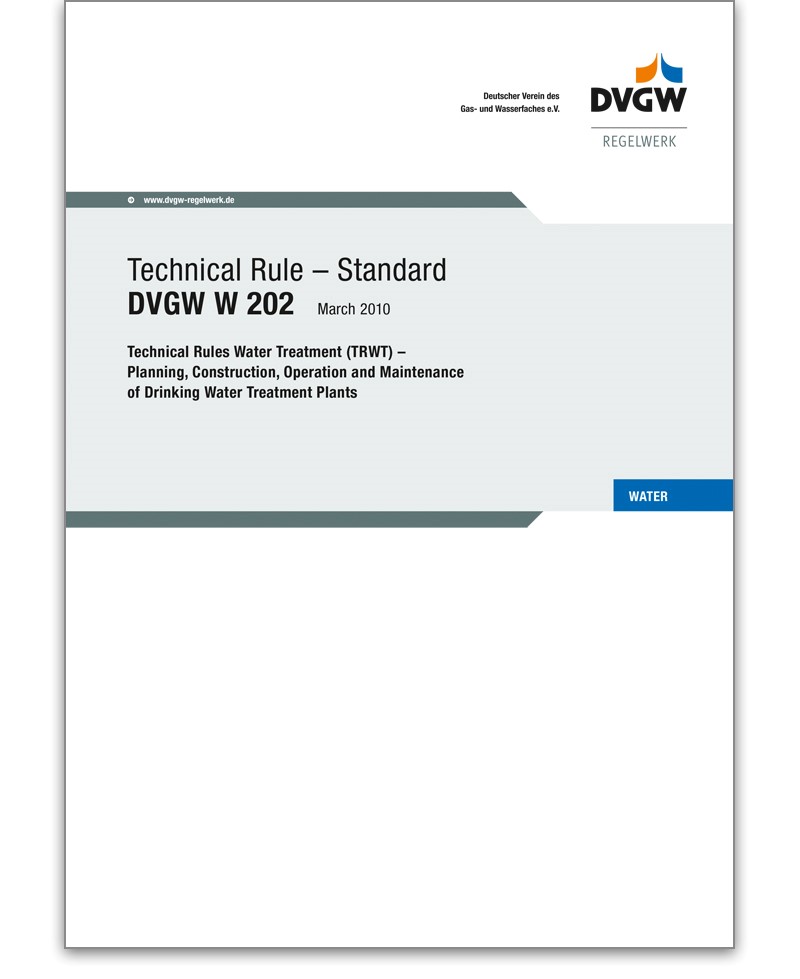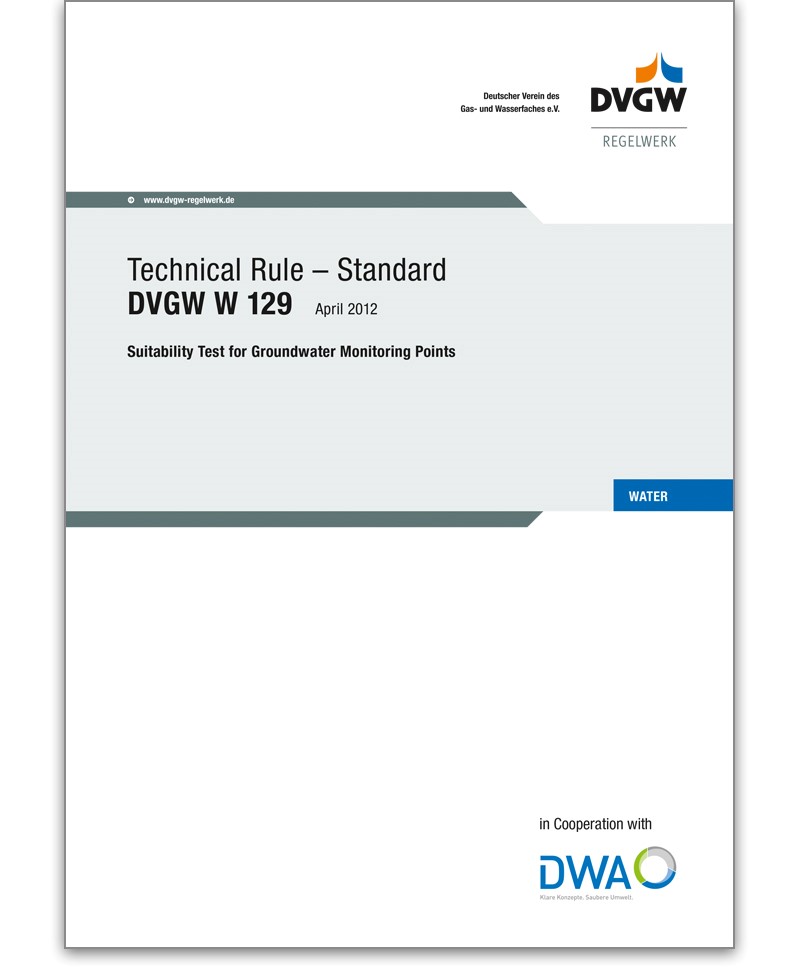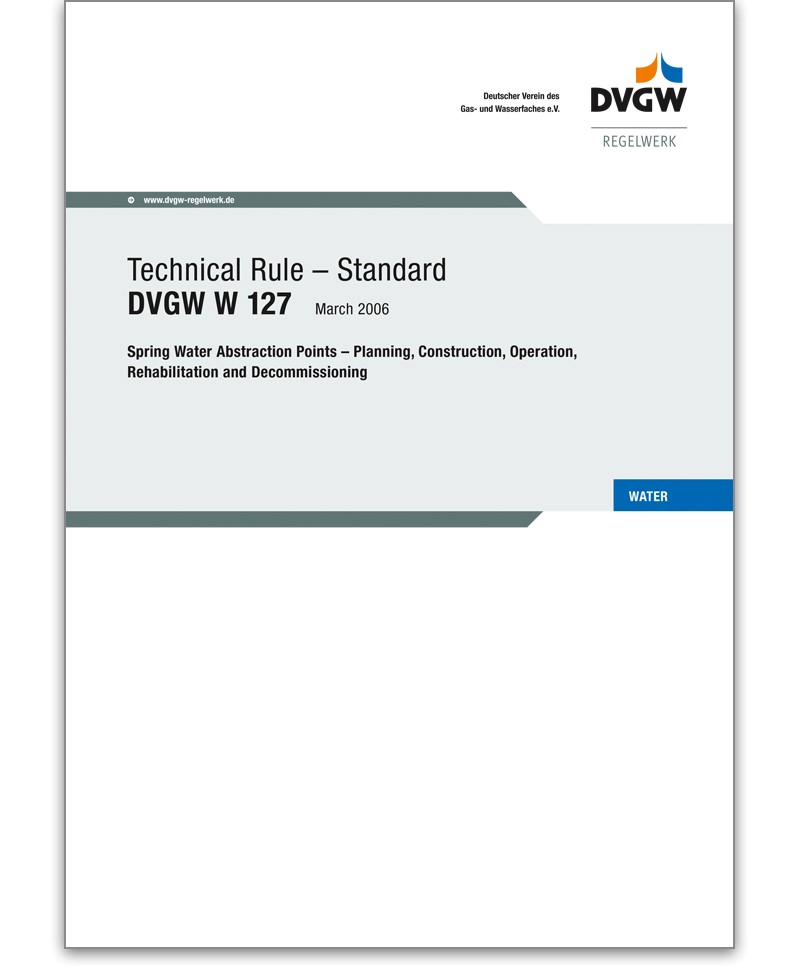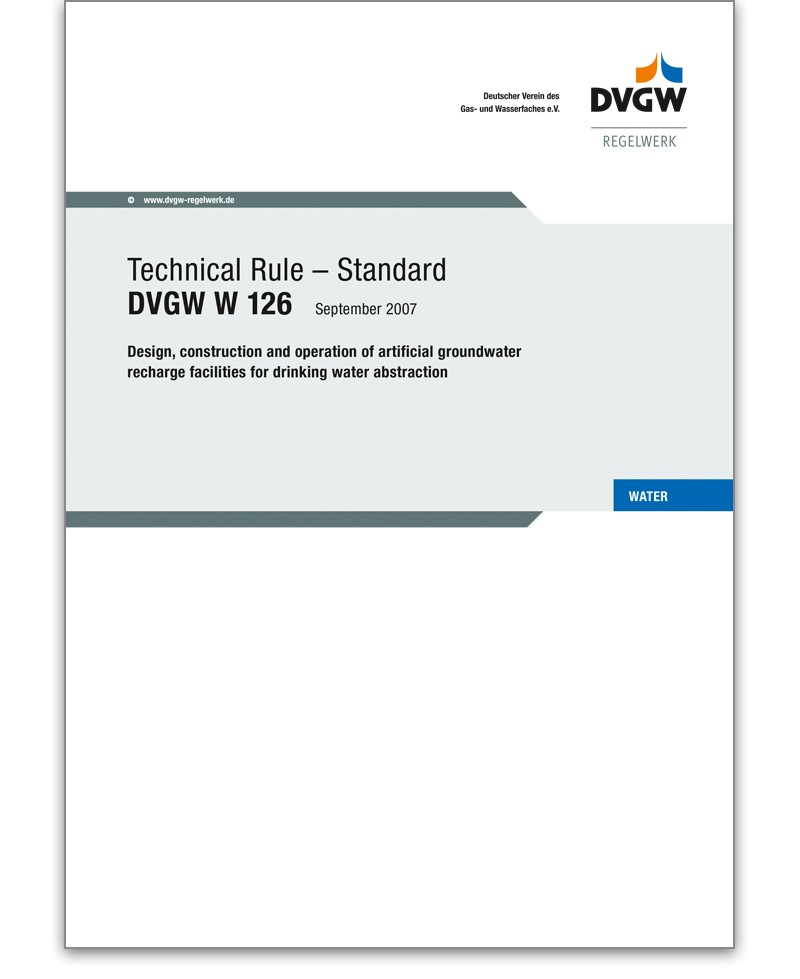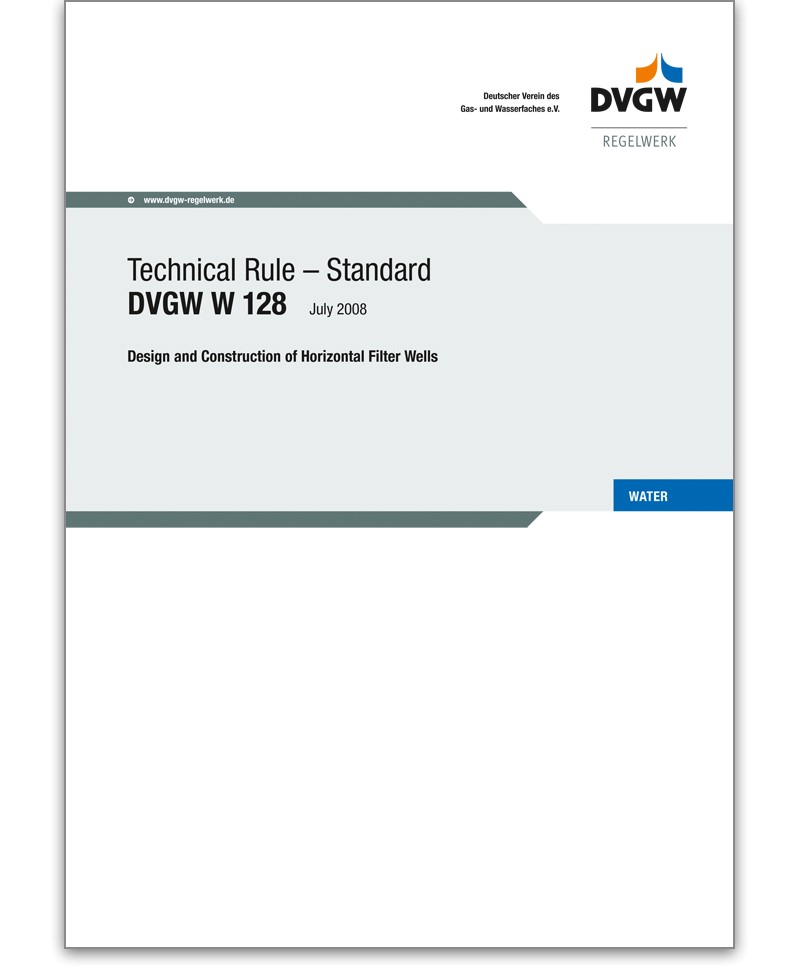
DVGW Set of Rules Water
They ensure that water is safe to use at all times. The DVGW Set of Rules is compulsory reading for water supply companies, tradesmen, plumbers, engineers, health authorities and anyone who deals professionally with the subject of drinking water.
W 1000 Technical Rule - Standard 08/2022 -pdf-file-
62,03 €*
W 1000
describes the requirements on water utilities in the area of the public water
supply as regards their structural and process organisation.
This
standard W 1000 applies to water utilities that are active in the field of the
public water supply. It stipulates the requirements on the qualification of the
work force and the organisation of these companies as basis for a safe, dependable,
environmentally compatible and economically efficient public water supply as
defined by DIN 2000 and the statutory regulations.
The
requirements of this standard W 1000 apply equally to contracting parties
commissioned by the water utility.
W 551-2 Technical Rule - Standard 08/2022 -pdf-file-
79,28 €*
This standard W 551-2 applies to the operation and
maintenance of drinking water installations in buildings. It stip-ulates the
requirements on the management of technical and microbiological irregularities
that may ad-versely affect hygiene in drinking water installations.
W 1003 Technical Rule- Standard 06/2022 -PDF-Datei-
79,28 €*
This Standard W 1003 relates to the piped supply of public
water under normal operating conditions. Covering the different technical
aspects and value-added steps, it provides an integral overview of how to
describe, analyse and assess the resilience and security of supply in water
supply areas.
GW 381 Technical Rule - Standard 05/2015
39,92 €*
For the purposes of this Standard GW 381, the term minimum requirements implies that further requirements can ensue from technical rules and legal provisions and/or that the ordering party may stipulate further requirements, in particular in the presence of special features or needs for protection or other constraints. The optional criteria shall, without claiming to be exhaustive, be considered guidance for the ordering party who shall decide on the need for further requirements. If a company consists of several units, this technical rule applies to the units in charge of underground construction and, without exception, to independent subsidiaries as well. A subsidiary shall be assumed to be independent if, in effect, it actually controls most operations and/or if the head office of the company is unable to provide the supervision of the staff and the construction sites as required.
W 110 Technical Rule - Standard 05/2019
79,28 €*
This Standard W 110 intends to offer guidance for the beneficial use of geophysical logging measurements. It aims to help the user find the optimal combination of logging techniques for a defined task as early as in the concept phase of borehole surveys in vertical and, where due to design constraints, partially also in horizontal filter wells as well as in groundwater monitoring points. It is by no means a tool for evaluatingand interpreting geophysical measurements, a field that in the course of the last decade has evolved into an almost autonomous scientific discipline and, therefore, should be reserved for the relevant experts toengage in.This Standard applies to the design and execution of geophysical measurements in boreholes for groundwater exploration and abstraction in unconsolidated and consolidated rock, including well and groundwater monitoring point surveys. Drillings and probes used in near‑surface geothermal systems have a Special position in this context.
GW 350 Technical Rule - Technical 06/2015
79,28 €*
This Technical Rule GW 350 in conjunction with DIN EN 12732 applies to the manufacture, testing and Evaluation of welds on steel pipelines and installations which serve to supply the general public with gas within the meaning of the Energy Industry Law (EnWG) or which are part of the associated energy installations on factory premises and in the area of operational gas use and which are to be operated with the gases of the 2nd gas family according to DVGW Standard G 260 or DVGW Standard G 262. It also applies to pipes in operation.For steel pipelines and installations for gases which do not comply with the provisions of the above DVGW standards, this technical rule may be applied mutatis mutandis taking into account the specific properties of the gases and any other existing provisions.
W 130 Technical Rule - Standard 10/2007 -PDF file-
79,28 €*
This Code of Practice W 130 serves as a basis for the regeneration of wells and groundwater monitoring points. Ageing processes frequently compromise water well performance, adversely affecting, in turn, a wells service life and economic mode of operation. Well operators therefore face the dual challenge of having to identify the most appropriate regeneration methods for each specific case and being able to evaluate the success of the measures taken. Eventually, a direct capacity increase will ensure the economically efficient operation of a well over the long term only when combined with sustainably successful measures. Any well regeneration measures will, therefore, depend on the nature and scope of ageing and on the constructional condition of the well as well as on groundwater protection requirements. This Code of Practice describes the current requirements on the technically safe and hygienically flawless implementation of well regeneration measures, points out the causes of and explains how to identify well ageing processes, among other things, and offers suggestions on how to delay them. It additionally describes the application options and limits of both mechanical and chemical regeneration procedures and/or methods. By applying this Code of Practice, well operators and contractors alike will be able to record and trace the results achieved by the regeneration measures and evaluate their success, from the planning to the implementation and on to the final phase.
W 128 Technical Rule - Standard 07/2008 -PDF file-
62,03 €*
This Code of Practice W 128 provides a basis for the drilling and dimensioning of horizontal boreholes and the construction of horizontal filter wells. This Code of Practice does not discuss cut‑and‑cover methods ‑ protected by e.g. pit lining ‑ that are sometimes used in the field.
